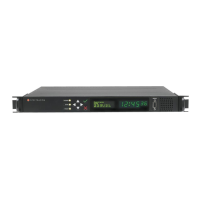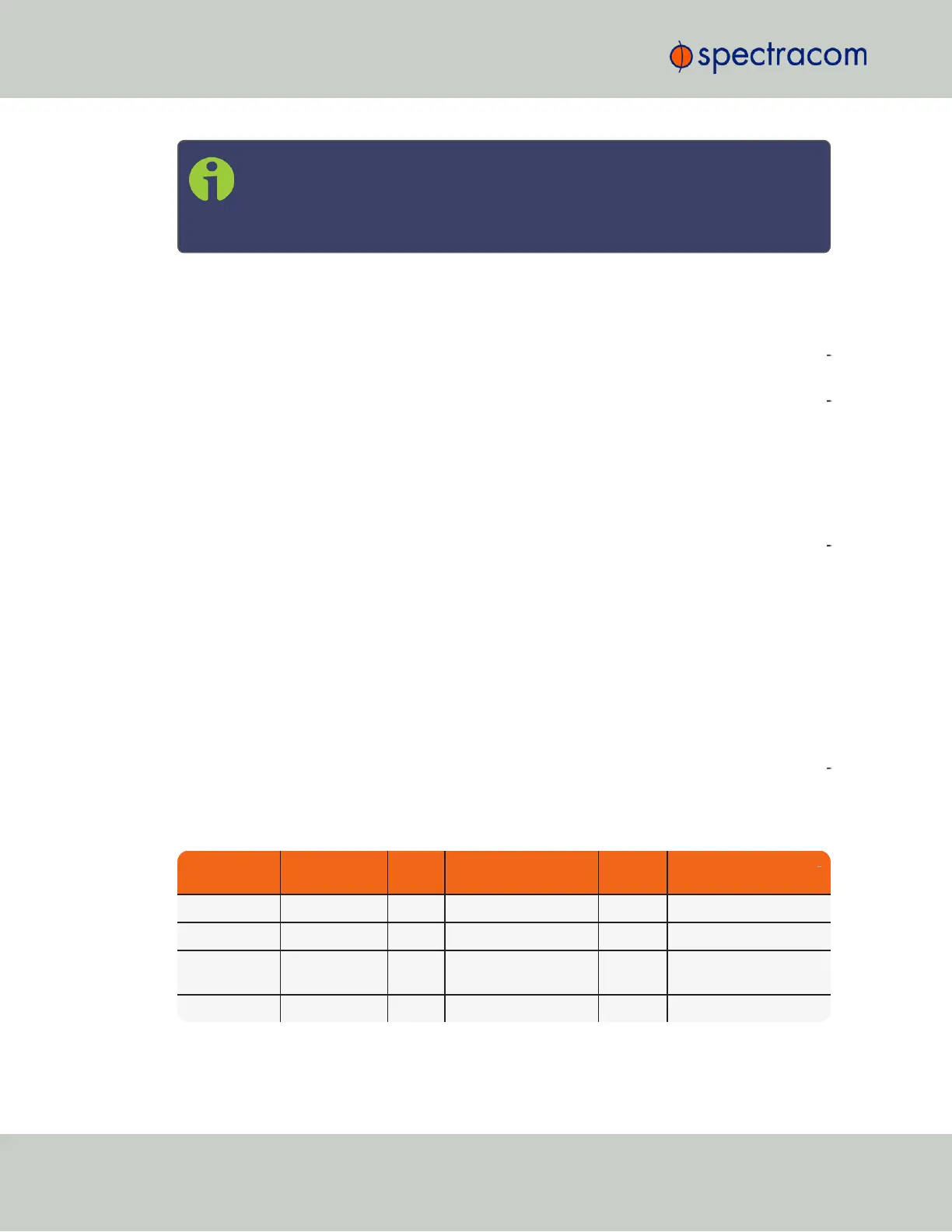Note: Changes made to the Holdover Timeout always take effect immediately. If
SecureSync is in Holdover and the Holdover timeout is changed to a value that is
less than the current time period that SecureSync has been in Holdover Mode, the
unit will immediately declare loss of synchronization.
What is the recommended setting for the Holdover Timeout period?
The factory default Holdover period is 2 hours (7200 seconds). The value can be increased up
to 5 years. During this time period, SecureSync will be useable by its NTP clients (or other con
sumers) after GNSS reception has been lost.
The length of time is really based on the type of oscillator installed in a unit, and what the typ
ical accuracy requirements are for the NTP clients. The longer it can run in Holdover mode
before it expires, the longer it can continue being a central time source for all of its clients. But
the longer SecureSync runs in Holdover, the larger the offset to true UTC time will become,
because the undisciplined oscillator will drift over time:
The better the type of oscillator installed, the more stable it is while in Holdover and therefore,
the less its time will drift away from true UTC time. This results in more accurate timing, over
extended durations upon the loss of GPS input. For instance, a Rubidium oscillator will main
tain significantly better time over a longer Holdover duration than a TCXO oscillator (TCXOs
are considerably less stable than a Rb oscillator).
Holdover time drift (Oscillator error rates)
The chart below provides typical time drifts (estimated "error rates") for the oscillator types that
can be found in SecureSync units. These numbers are based on the oscillator being locked to a
reference for two weeks, but then loses GPS reception for an extended period of time, while
the ambient temperature remains stable.
This data can help you determine how long of a Holdover period can be tolerated, based on
how much time drift may occur after GPS input is lost. The larger the time error that can be tol
erated by SecureSync clients, based on the oscillator installed, the larger the Holdover timeout
period can be set to.
Table 3-3:
Estimated Holdover time drifts
(Nominal
drifts)
TCXO OCXO
Low Phase Noise
OCXO
Rubidium
Low Phase Noise Rubid
ium
After 4 hours 12 µs 1µs 0.5 µs 0.2 µs 0.2 µs
After 24 hours 450 µs 25 µs 10 µs 1µs 1µs
After 7 days 3150 µs (3.1
ms)
175 µs 70 µs 7 µs 7 µs
After 30 days 13950 µs 775 µs 310 µs 31 µs 31 µs
To find out which type of oscillator is installed in your SecureSync, navigate to
MANAGEMENT > OTHER: Disciplining, and look for the line item Oscillator Type in the
192
CHAPTER 3 • SecureSync User Reference Guide Rev. 23
3.4 Holdover Mode

